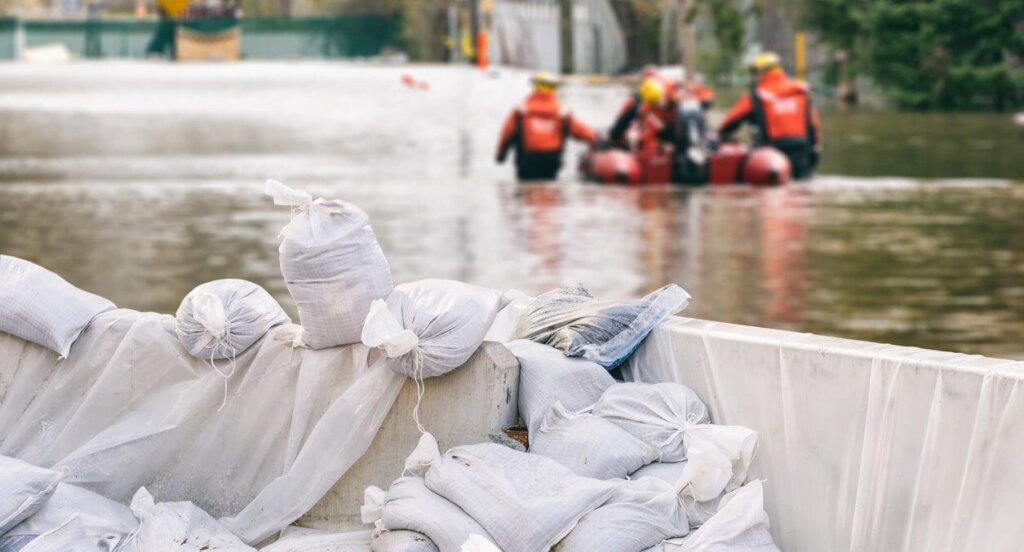
Disaster response is top-of-mind for health departments across the country. To help agencies be prepared ahead of a disaster, we’ve compiled some important tips and tricks.
1. Track & report – When the pressure is on to gather resources and information to respond to a disaster, and when agencies like FEMA or the Army Corp of Engineers need your data, you don’t want to be combing through spreadsheets from multiple computers, doing data cleanup and filtering out irrelevant information.
The best way to avoid this scramble is to have a data system that compiles all your health data across programs. If you already have a system of record, ask yourself some of these questions: “If I needed to share a list of my facilities in a certain area, could I do that quickly? How many people would be involved in that effort? How much time would it take to put together? What information would other agencies involved in disaster response need to know to do their part; do I have that information handy and in one place?” If the answer is no, then perhaps it’s time to re-asses your current data system and process.
With a system that you can configure to meet your needs, you won’t need to do vLookups against multiple spreadsheets, or figure out where someone keeps their personal inspection leger in a time of crisis – it’ll just be where you need it: in one place, and with reporting options. With data combined and cross-referenced, you can run reports showing things like the location, type and permit status of facilities within the affected area, and who the point of contact is, with the click of a button. This means you’ll be able to share your data internally and externally when it’s needed most: right away.
2. Location, location, location – When it comes to a large-scale disaster, knowing which facilities have been impacted is key for your communication, response and cleanup. But depending on the format of data being shared between agencies, associating an impacted facility with the actual location of the disaster zone can be tough. Some of your regulated facilities aren’t always associated with a mailing address, so how do you connect a location in reality with points on a map? Is the impacted area determined by parcel numbers or addresses? Either way, you want to make sure you’re prepared by loading up the parcel numbers your facilities are associated with in your system, so you can identify impacted facilities using more than one method. Being able to map your facilities against the disaster line, and share your maps externally is key.
Pro-tip: Work on linking APNs to your facilities’ address now, so you don’t have to do that in the midst of the chaos.
If you really want to execute your duties quickly, having a system that automatically tracks your facilities on a map, and can be shared electronically or on paper might seem far in the future. Lucky for you, this functionality exists now! Read on…
3. Communication is key – So you’ve run reports to identify all the facilities in the affected area, and mapped exactly where they are. Now how do you contact the facility operators? Mail may or may not get delivered, and in some cases, there may no longer be a physical place to even deliver mail at all. With a system that has captured all the contact information for the operator, including email addresses, you can easily mass email them with health risk advisories, reminders and instructions that will keep them, and the community safe during the response efforts.
Better yet, if you can do ongoing education for operators during your annual inspections ahead of a disaster, that’s the best and most proactive approach. Try asking questions like, “Do you have a back-up generator in case the power goes out? Have you thought about what you’ll do if there’s a big earthquake or fire that results in damage to your facility? Is your insurance up-to-date?” This, along with providing some guidelines on how to take quick action before, during or after a disaster can help reduce the risk and the heartache that any level of destruction can bring.
4. Data Sharing – Now that you’ve got the data compiled, the mapping and the notification down, now comes time to sharing it with the agencies who need it most. FEMA, Army Corp of Engineers, National Guard, sister agency health departments, your own fire or hazardous materials departments, CDC, and the list of agencies who may need your data goes on and on.
One way to share your data is to run a report (if you can and print or email it. But guess what: we live in the 20th century, folks! You should be using API’s as much as possible. What’s an API? It’s a quick way to describe the ability for two applications to exchange information. Why is it important? Because not all data systems have this function, so making sure you’ve got one that does is key. Wouldn’t it be great if you could set up an API that would help your contact at FEMA view your data in real-time, from their own system? Well, though it may take a tiny bit of set up, it’s not outside the realm of possibility!
5. Data Security in the Cloud – In the unfortunate event of a disaster that ends up taking out your health department building, or the IT building that houses your data – all of the above tips become moot if you’ve lost everything. One growing way to mitigate this very real risk is to move your data to the cloud.
With cloud hosting, agencies don’t have to worry about losing their data if their servers are taken out, or if they go down, because their data is kept safe when it’s not on-premises where the disaster has struck.
When your infrastructure is hosted in the cloud, you have safeguards such as redundant power sources, multiple levels of system redundancy, advanced fire suppression and physical security, and mirroring across geographically dispersed locations. This means your lifeblood, your daily driver of all regulatory action, and the data stored within it is protected against natural disasters or statewide outages. Cloud hosting ensures your applications are always available to serve your community when they need you most.
6. Bonus Tip: Prepare, Prepare, Prepare – One thing that we hear from our health department customers who’ve been impacted by a largescale disaster is just how essential pre-planning is. You don’t want to be stuck saying, “I just wish we had this before it hit”. And you can avoid that situation by putting in a bit of time now.
Yes, it’s tough to devote time to something that may or may not happen in the future when you’ve got real risk right in front of you every day, but even spending just a few hours per week to a disaster plan will have you thanking yourself should something really go wrong. Think about reaching out to your sister health agencies who’ve recently experienced a disaster – they certainly have tips and tricks on how to respond. And, if you’re an Accela customer, you have access to the Accela Community, where you can pose the question to health departments across the country and share best practices that way.
Read more about how Charlotte County, FL Community Development used the Accela Civic Platform to assist with damage assessment and handle permit applications in the aftermath of Hurricane Irma.
To find out more about Accela’s Solutions for Environmental Health agencies, visit our solution page.






